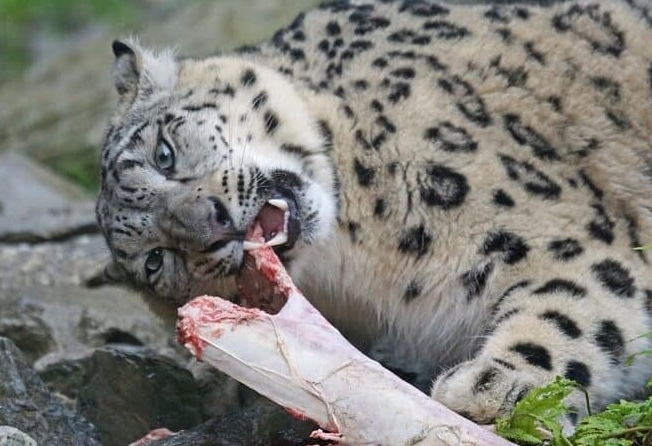The snow leopard is an elusive and mysterious big cat that roams across the mountains of Central and South Asia. One of the most enigmatic aspects of these majestic animals is their diet. What exactly do snow leopards eat in their harsh and remote mountain habitats?
Hunting in the High Mountains
Snow leopards primarily prey on wild sheep and goats in their mountainous homes. These include species such as blue sheep (bharal), ibex, and argali. They are also known to hunt smaller animals such as marmots, pikas, and hares.
Expert Hunters
Snow leopards are incredibly skilled hunters, able to stalk their prey silently and pounce with lightning speed. They use their powerful hind legs to leap onto their unsuspecting prey, delivering a fatal bite to the neck.
Opportunistic Feeders
In addition to wild sheep and goats, snow leopards are known to scavenge on the carcasses of animals such as yaks and livestock left by herders. This opportunistic behavior helps them survive in their harsh and unpredictable environments.
Conserving Prey Populations
The diet of snow leopards is intricately linked to the populations of their prey species. As apex predators, snow leopards play a crucial role in maintaining the balance of mountain ecosystems by keeping herbivore populations in check.
Challenges in Studying Diet
Studying the diet of snow leopards is a challenging task due to their secretive nature and remote habitats. Researchers rely on a combination of methods such as tracking collars, camera traps, and scat analysis to piece together a comprehensive picture of their diet.
Protecting Snow Leopard Habitats
Understanding the diet of snow leopards is essential for their conservation. Protecting their habitat and prey populations is crucial for ensuring the survival of these iconic big cats in the wild.
In conclusion, the diet of snow leopards is a fascinating and complex aspect of their biology. By unraveling the mysteries of what these elusive big cats eat, we can better protect and conserve them for future generations to admire and appreciate.

